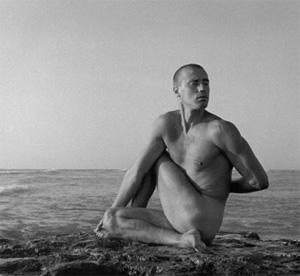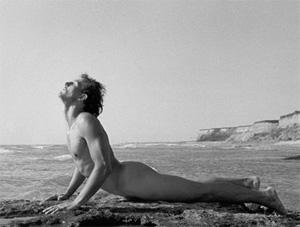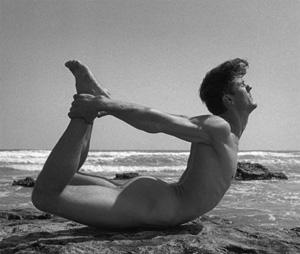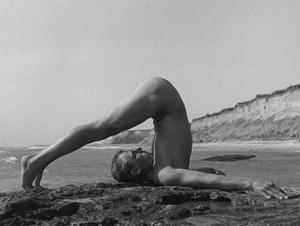|
|

|
Podcast
Yoga
Tantra
Yantras
Meditation Music
Guru
No part of this Site may be reproduced in any form, without explicit written permission.
|
T H E S U B T L E B R E A T H I N G 
First of all the practitioner should pay attention to the stages of breathing: breathing in, retention of the breath and breathing out. Breathing in should be natural, never forced; the air should get inside the body as the result of the enlargement of the abdomen. When we are retaining the breath inside, the inferior part of the body has to take the form of a vessel; the yogic term for this is kumbhaka, which means "the one that contains". Retaining the breath is the milestone of breathing techniques. This is where the great force springs. During this stage, the air is partially absorbed by the lungs out it energizes the whole body. The Tantric adept is advised to imagine that he absorbs the life-giving energies of Brahma. While on retention, the attention of the adept should be directed on extracting the vital energies and making them circulate through the body. Finally, during breathing out he/she should imagine that all impurities, diseases or nervous tensions leave the body and go back into the ground in order to be purified.  All these three parts of the process of breathing should be linked together, without interruptions or sudden moves. Moreover, one should always be aware and focused during the act of breathing.
All these three parts of the process of breathing should be linked together, without interruptions or sudden moves. Moreover, one should always be aware and focused during the act of breathing.The most important moment is the retention of the breath after inhaling, when the flow of the energy is improved and the subtle channels of the body are being reopened. There is also an increased amount of gland secretions, especially saliva, which, according to the yoga learning, strengthens and nourishes the human being. A yogic treaty, Goratsha shatakam, strongly sustains that: "The practitioner should breathe in slowly and breathe out the same way, trying not to retain his breath for too long, and yet not to let it out too quickly either. The control of the breath destroys all karmic residues, bringing harmony and equilibrium to the whole body." Complete breathing - inhalation, retention and exhalation represents the first step in using breathing techniques as modalities of reaching the ultimate state of freedom. Once you get accustomed with a healthy and harmonious pattern of breathing, you will have the possibility to experience other specific rhythms of breathing. For the example, the healing breath is an extremely simple technique and can be practiced anytime, as described below: 
Prolong inhalation at first, and then do exactly as said before. Then gradually increase the time of inhalation, keeping the proportion of the other two. The result of such practice is that the process of breathing is slowed down, and will relax and refresh both body and mind. Nonetheless, do not practice this technique too much too soon. If you feel dizzy or tired, or if your heart is beating too fast stop practicing it as these are signs indicating that you are forcing things. It is recommendable that you gradually increase the period of retention. The proportion between inhalation, retention, and exhalation should be counted in terms of heartbeats (they can be noted by simply moving your fingers), or by using a clock. It is not indicated that the counting be done mentally, because if the mind is not focused entirely on the technique, its benefits will not be as powerful as they would normally be, that is if you are completely focused on the technique. This recommendation is because the mind should focus on the process of meditation, and not on the logic, rational process of counting. An effective method for concentration is to focus on the sounds produced by the air when inhaled and exhaled. The Yogic treaties describe a large number of sounds that appear while breathing in and out. For instance, Gheranda Samhita: "When the air gets in, it makes the "sah" sound and when it gets out it makes the sound "ham". These two sounds give birth to the words "saham" (or "soham" which means, "I am HIM") or "hamsa" (which means "the Great Swan", referring to "The Bird of the Soul").  Each living being produces these sounds, unconsciously. This subtle sound can be heard in three places: in the so-called 'root' centre (situated between the anus and the genitalia), in the heart centre and in the third eye (placed between the eyebrows).
Each living being produces these sounds, unconsciously. This subtle sound can be heard in three places: in the so-called 'root' centre (situated between the anus and the genitalia), in the heart centre and in the third eye (placed between the eyebrows).The Yogi will consciously repeat these sounds, gradually increasing the duration of the inhalation, and preserving the proportion between the retention and exhalation." Another method for keeping track of the proportion between inhalation, retention and exhalation is to create and repeat a phrase with a powerful, positive meaning, such as: "I am surrounded by a benefic aura of protection", using the length of these words as a unit of measure. During all this time, you may try to visualize this aura as a yellow light around your head. You can use a mantra in exactly the same way. It will be repeated at every stage of the process of breathing, respecting the already established proportion. Walking is an ideal moment for practicing and developing the healing breath because you can use the number of your steps in order to improve your technique. The correct practice of the 'healing breath' technique will refresh your entire body. Your mind will take advantage from its practice as well, as it gradually reaches a state of profound calmness.
|